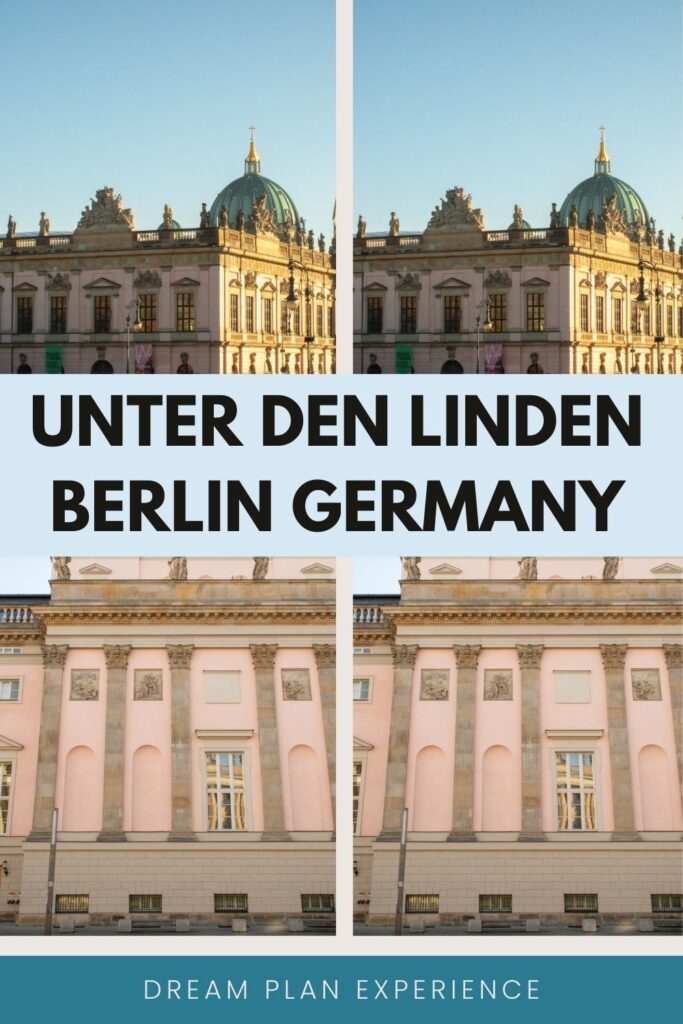Walking down Unter den Linden in Berlin is a must!
This historic boulevard, whose name translates to “Under the Linden Trees,” is one of Berlin’s most iconic streets, lined with architectural highlights, monuments, and a leafy charm that makes it uniquely inviting.
As a Berlin local, I know that Unter den Linden isn’t just for tourists—it’s a keeper of so much important history, not to mention the focal point for many fun festivals and events.
For travellers looking to understand the essence of Berlin in one walk, this guide will help you discover hidden details often missed, practical tips for your visit, and insights into the significance of landmarks, from the Brandenburg Gate to the Berliner Dome. Museum.
This post may contain affiliate links, meaning I get a commission if you decide to purchase something through the links, at no additional cost to you. Read my Affiliate Disclosure.
What is Unter den Linden and its History?

Unter den Linden is a 1.5 km boulevard that stretches from the iconic Brandenburg Gate to the Schlossbrücke, the bridge spanning the Spree River to Museum Island. This area is considered the heart of the city and what many think of as Berlin’s city centre.
How it Got its Name
A Berlin fun fact, the history of the name “Under the Linden Trees” stretches back centuries. The name stems from its early beginnings as a riding trail.
In the 16th century, Friedrich Wilhelm, the Great Elector, was struck by the charm of the Linden trees that lined this path, and he ordered their preservation.
It was in the 18th century when the boulevard underwent a significant transformation, becoming a symbol of enlightenment.
King Frederick the Great, an avid patron of the arts and sciences, planted even more Linden trees, turning the avenue into a hub of culture and intellect.
Poets, philosophers, and scholars gathered under the Linden trees, making Unter den Linden an epicentre of creativity with the exchange of ideas. It’s where Frederick Engels, of Marx and Engels fame, penned revolutionary ideas in a nearby café.
The name “Unter den Linden” evolved into more than just a reference to its iconic Linden trees; it became a symbol of Berlin’s enduring commitment to culture, progress, and growth.
Impacts of WWII and Cold War

Berlin faced 80% of the city centre left in rubble after WWII bombings.
Yet, the column and statue of Frederick on Schlossbrücke miraculously survived the bombings. Folklore believed that it was Frederick’s indomitable spirit that protected the statue, symbolizing the enduring strength and cultural resilience of Berlin.
When the city was divided into East and West Berlin by the Berlin Wall in 1961, Unter den Linden was also affected by this division.
The eastern part of Unter den Linden, which included many historic buildings fell within East Berlin under the control of the Soviets that formed the German Democratic Republic (GDR).
The western part of Unter den Linden, closer to the Brandenburg Gate was in West Berlin, which was controlled by the Western Allies, including the United States, the United Kingdom, and France.
It wasn’t until the fall of the Berlin Wall in 1989 and the reunification of Germany in 1990 that this historic boulevard was once again fully accessible without the restrictions of the Cold War era.
Today, Unter den Linden is a symbol of Berlin’s reunification.
Walking Tour of Unter den Linden Berlin Germany
1. Brandenburg Gate

Let’s start here.
The neoclassical Brandenburg Gate, the most recognizable landmark in Berlin, was built between 1788 and 1791. The Quadriga sculpture on top symbolizes victory and peace, driven by the Roman goddess Victoria.
Steps from Brandenburg Gate sharing the same square is Hotel Adlon Kempinski, the historic, elegant luxury hotel with a Michelin-star restaurant. It has always been and remains the best hotel in Berlin.
📍Pariser Platz
2. Freedom Square
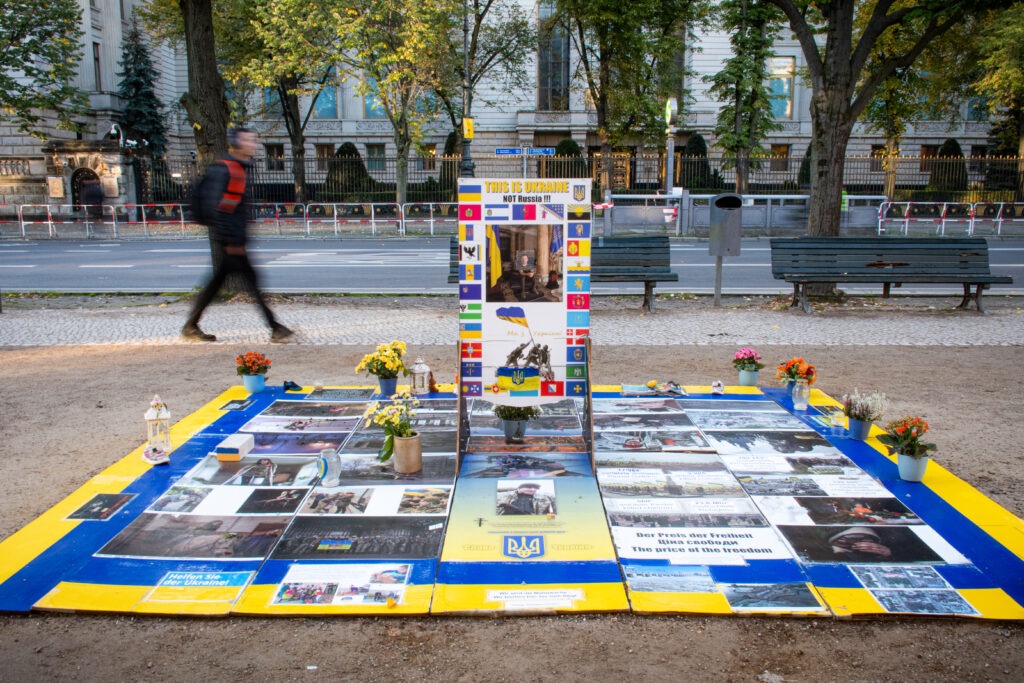
Just beyond Pariser Platz, in the middle of the boulevard, you will come across Freedom Square.
This offers a space for locals to commemorate any political or social injustices around the world. At different times, I saw tributes to the war in Ukraine and a local cyclist who died.
On either side of the square lies federal government buildings.
📍Freedom Square
3. The Berlin State Library
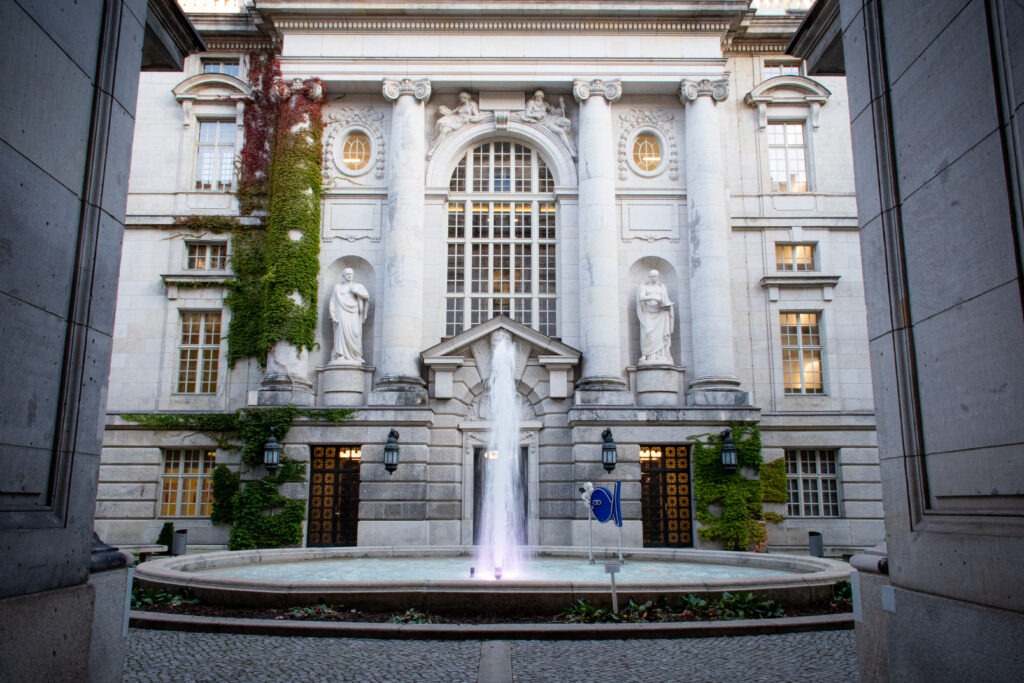
The Berlin State Library (Staatsbibliothek zu Berlin – Preußischer Kulturbesitz) is a hidden gem. Not only is it one of the largest libraries in Germany housing a vast collection of books and documents, it is stunning!
Hidden away unbeknownst from most tourists you can visit it and its private courtyard. It’s most stunning in the autumn when Berlin turns golden, and the beautiful wall of ivy turns a deep red.
📍8 Unter den Linden
4. The Statue of Frederick the Great

The enlightened monarch and one of Germany’s greatest leaders is prominent in the centre of the Unter den Linden. Commissioned by King Friedrich Wilhelm III and completed in 1851, the statue was encased in cement during WWII to protect it from bombing, and it survived and remained intact.
📍9 Unter den Linden
5. The Old Palace
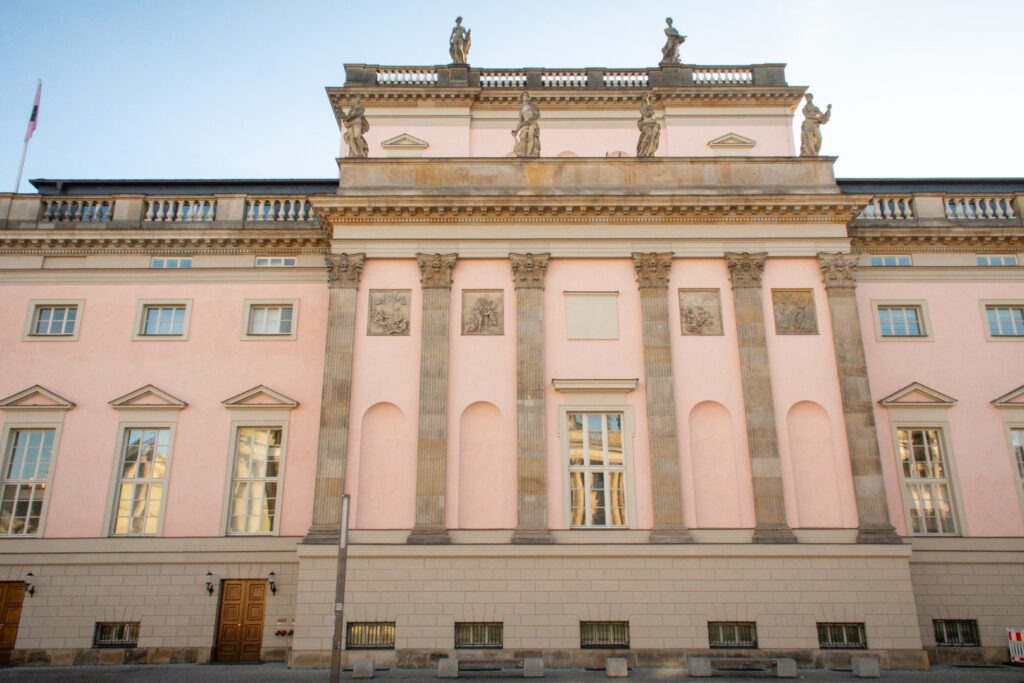
The Old Palace (Altes Palais), formerly the Kaiser-Wilhelm-Palais, once served as a winter residence for Prussian Prince Wilhelm and later German Emperor Wilhelm I.
Built between 1834 and 1837, it was later reconstructed after being damaged in World War II, retaining its historic facade while gaining a modern interior. Today, it houses the law faculty of Humboldt University.
📍9 Unter den Linden
6. Bebelplatz
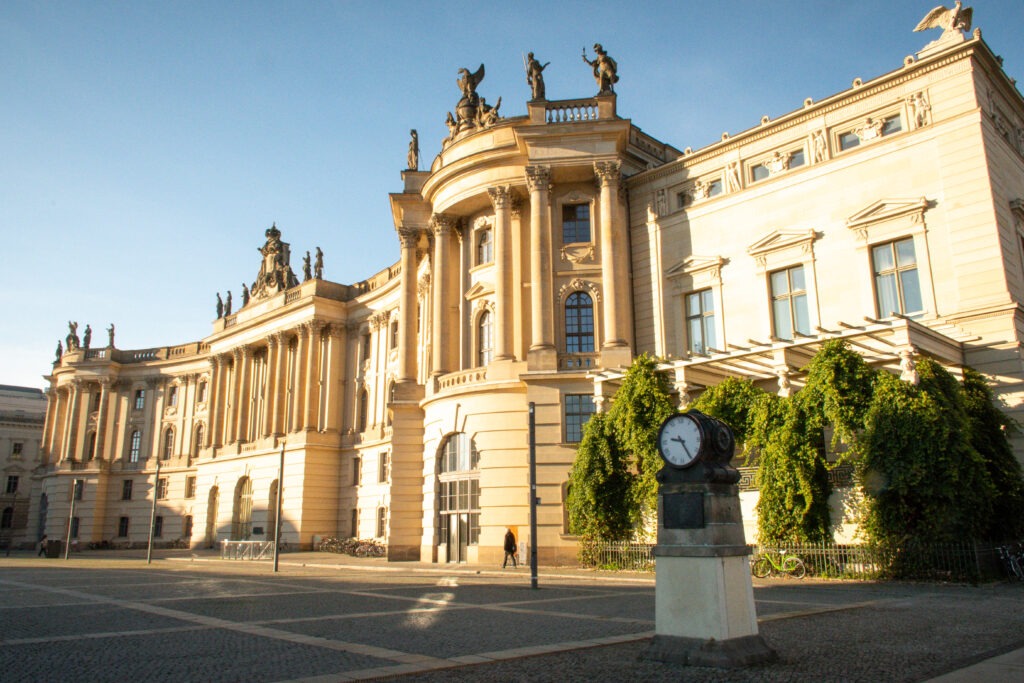
Bebelpatz is most likely known for its sombre memorial to the famous Nazi book burning event that took place on May 10, 1933.
The memorial features a glass square to an underground room with empty bookshelves representing a reminder that 20,000 books were burned at the hands of the Nazis.
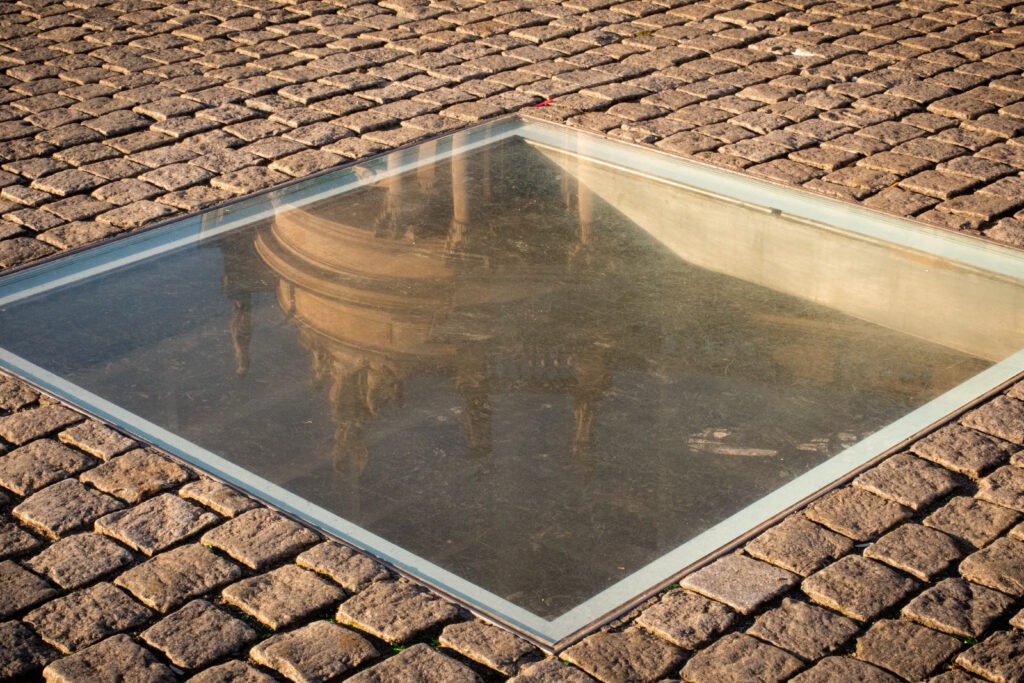
Buildings found on Bebelplatz include:
- The Old Library (Alte Bibliothek): the book collection dates back to 1661 and to accommodate the expanding collection, a high baroque library was constructed between 1775 and 1780, often referred to by Berliners as a “chest of drawers,” modelled after the Vienna Hofburg.
- St. Hedwig’s Cathedral: Frederick the Great, authorized the construction of the Berlin version of the Pantheon, a Catholic church, in 1743. Unfortunately, it’s been closed for significant restoration since 2018, and it may be some time before its interior can be admired once more.
📍Bebelplatz
7. Berlin State Opera
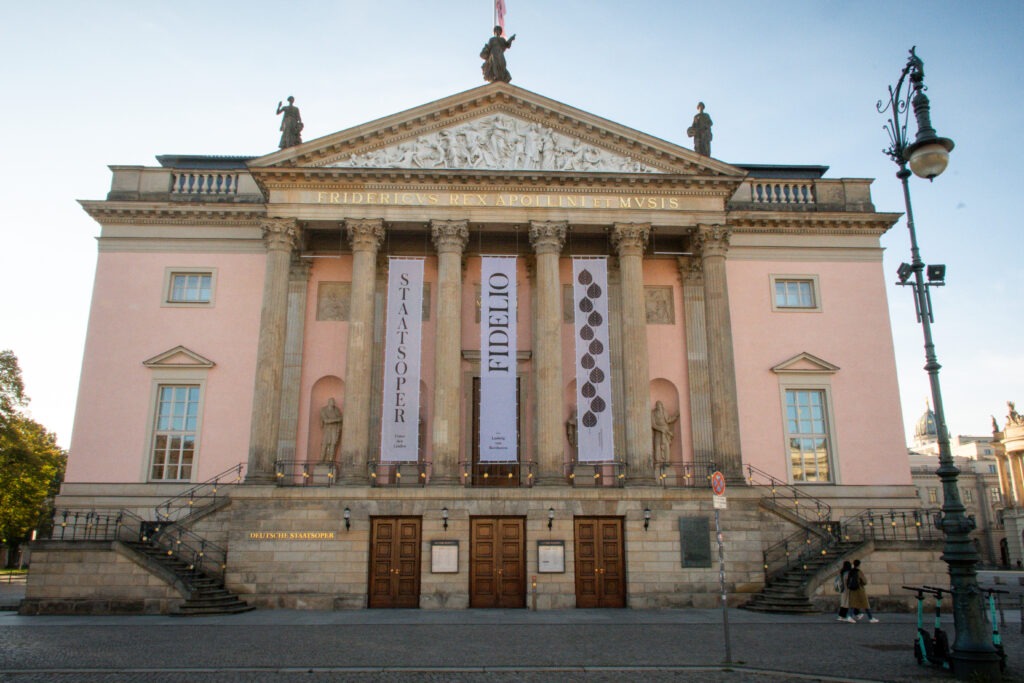
The Berlin State Opera is a pretty pale pink building with stone structures, gold accents, and grand chandeliers. It hosts ballet, opera, and classical music performances, from famous composers like Mozart and Wagner.
It was commissioned by Prussian King, Frederick the Great from 1741 to 1743 and had to be rebuilt after WWII.
📍7 Unter den Linden
8. Humboldt University
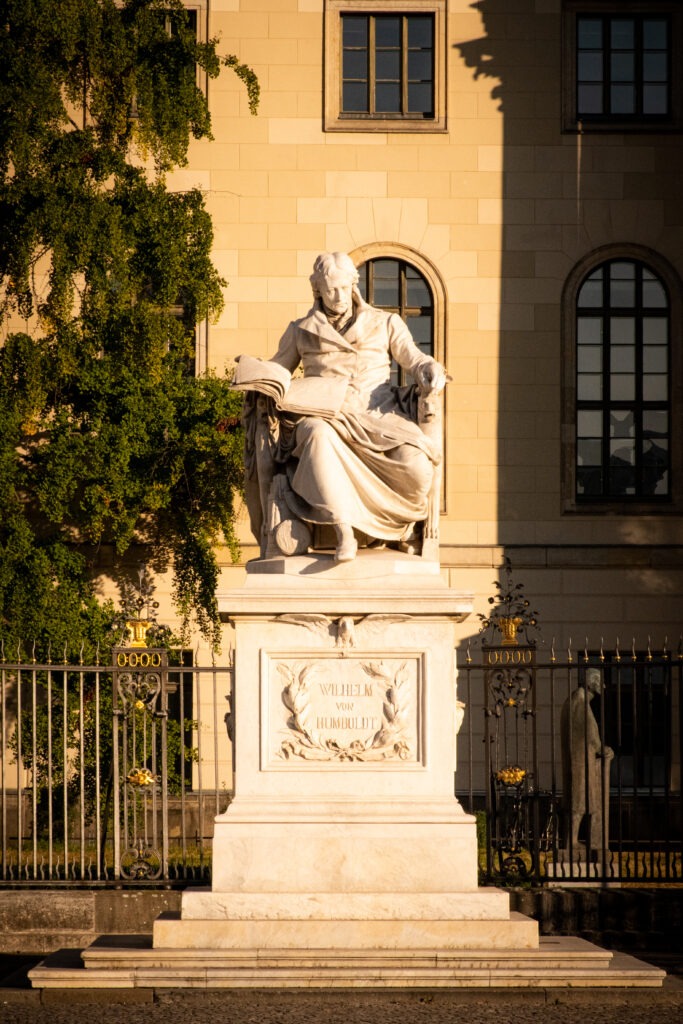
A prestigious University founded in 1810 by the Humboldt brothers known for their intellect. Even Albert Einstein and Karl Marx were among the notable alumni.
I always like to peruse the table of books for sale outside the entrance by the statue of Alexander-von-Humboldt on fair weather days.
📍6 Unter den Linden
9. The Neue Wache

The Neue Wache, which translates to “New Guardhouse” in English, is a neoclassical building from the early 19th century. It has served various functions over the years, including as a guardhouse and a war memorial.
Today, it houses the Central Memorial of the Federal Republic of Germany for the Victims of War and Tyranny. The central focus of the memorial is the sculpture “Mother with her Dead Son,” and is free to enter.
📍4 Unter den Linden
10. Princess Garden and Popular Palace
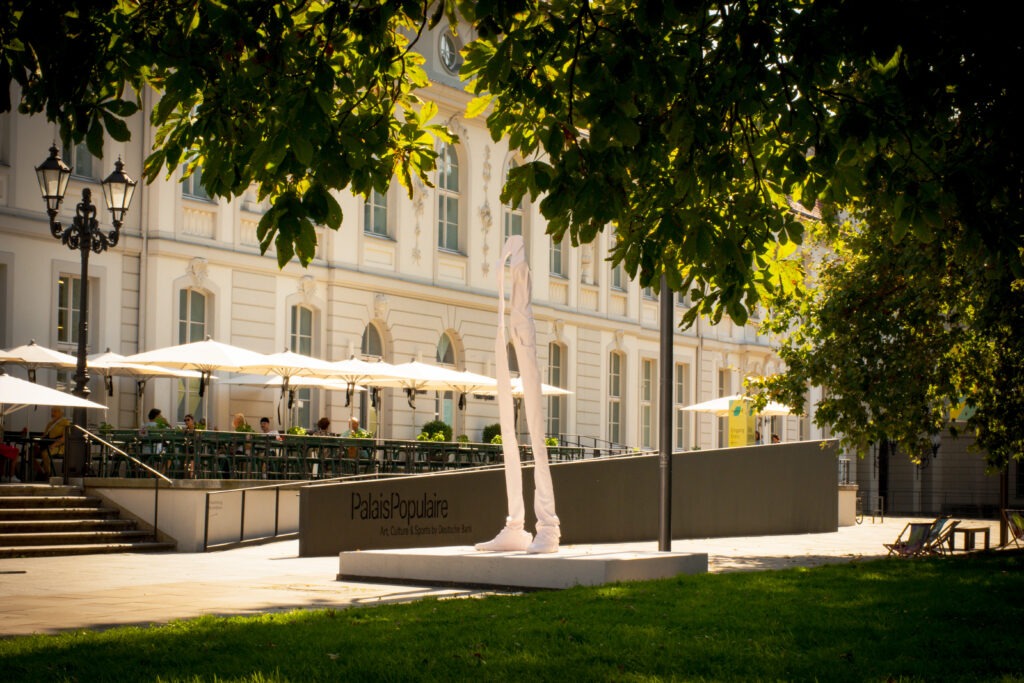
A small urban green space home to statues commemorating figures from Prussian and German history.
Next to it is Popular Palace, a free art gallery. I recommend sitting in the cafe with a view of this quiet park.
📍3 Unter den Linden
11. Crown Prince’s Palace
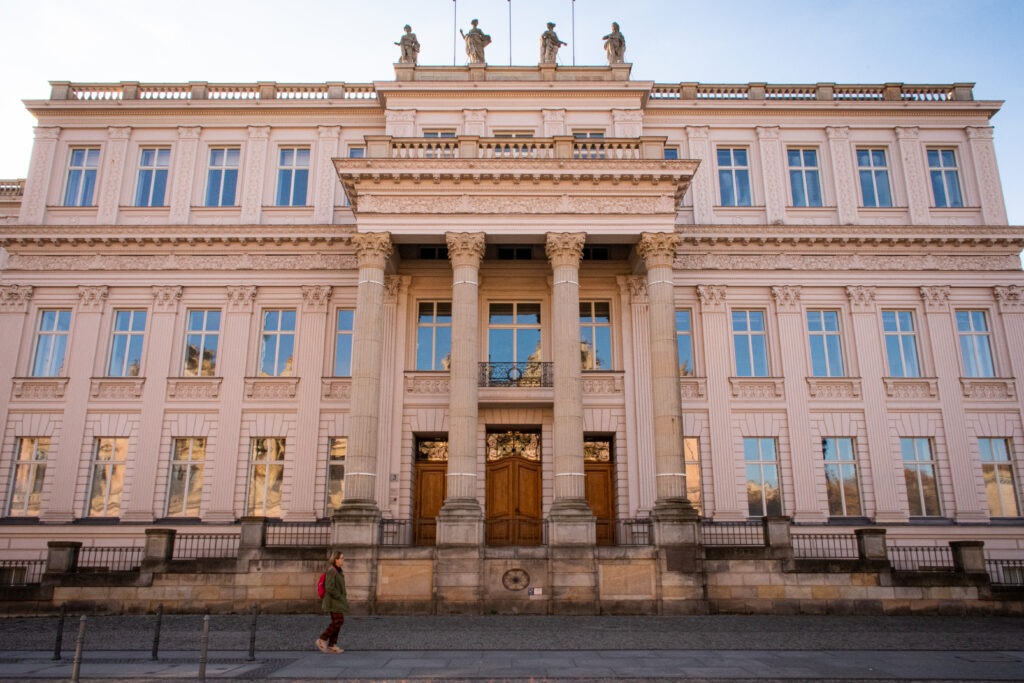
The elegant building known as Kronprinzenpalais was first built in 1663 as a private residence for the government but later served as the home of numerous crown princes from 1732 to 1918, giving rise to its current name. Notably, Emperor Wilhelm II was born here in 1859.
During the Cold War, it functioned as a residence for state guests to East Germany. Additionally, the historic reunification documents of Germany were signed here in 1990. Today it is reserved for events, and not open to the general public.
📍3 Unter den Linden
12. German Historical Museum
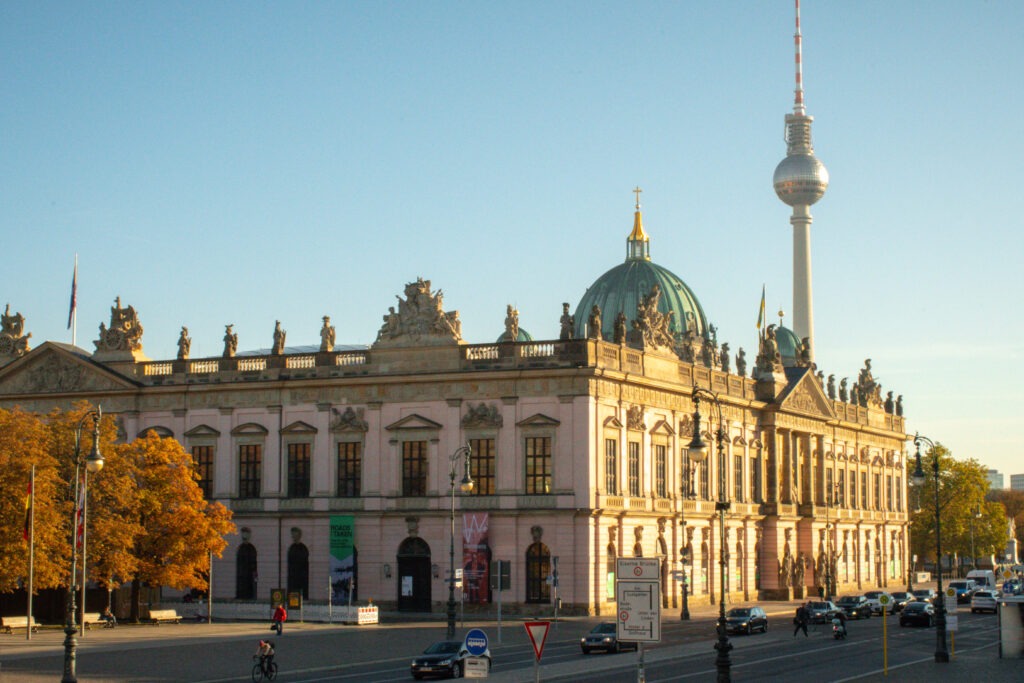
This is one of my favourite buildings along Berlin’s Unter den Linden, and that’s because it is just so darn pretty with its pale pink facade. Originally constructed in 1695, it served as a weapons depot for nearly two centuries, later becoming a military museum from 1883 to 1945.
Post-war it transformed into the Museum of German History.
📍2 Unter den Linden
13. Schlossbrücke


Schlossbrücke, or the Palace Bridge, is a Berlin landmark that spans the River Spree, connecting Unter den Linden with Museum Island. Just like any famous bridge in Europe, it offers great views of the city landmarks.
14. Museum Island
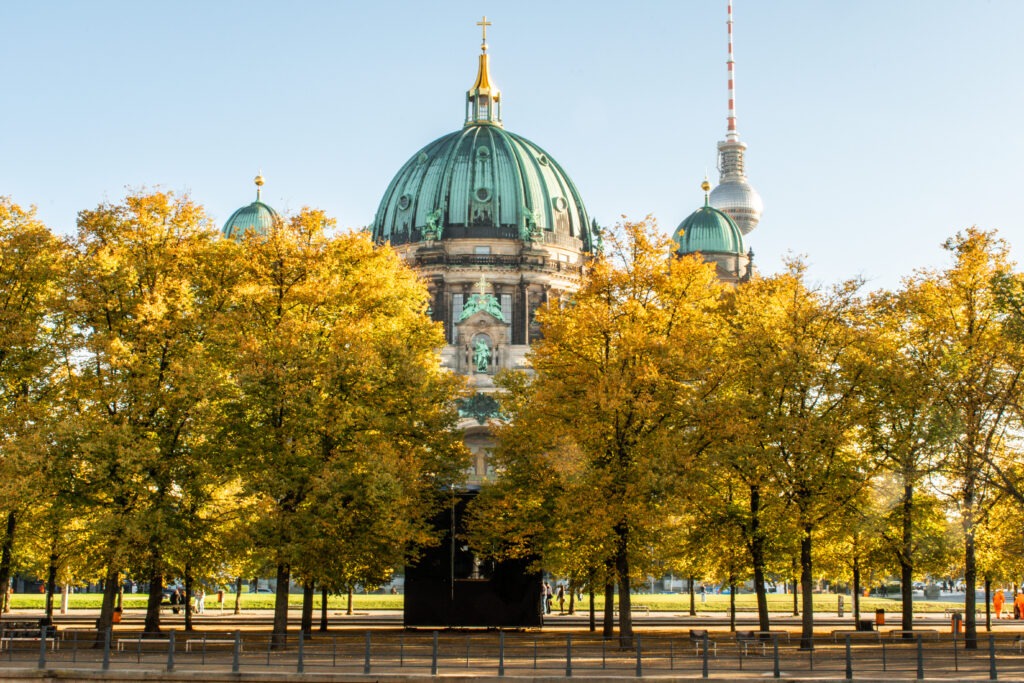
Museum Island, home to 5 world-class museums landed it a spot on the UNESCO site list. From Unter den Linden you will stroll past the:
- lovely expansive Lustgarten, a picturesque park that runs alongside the Spree River
- beautiful Berlin Cathedral (or Berliner Dom) which offers an observation deck with panoramic views of the city
- Humboldt Forum (formerly the Berlin Palace) has an eclectic mix of interesting exhibitions and collections and a rooftop cafe and deck with amazing views of Berlin
Festivals, Museums and Restaurants on Unter den Linden
Festivals on Unter den Linden
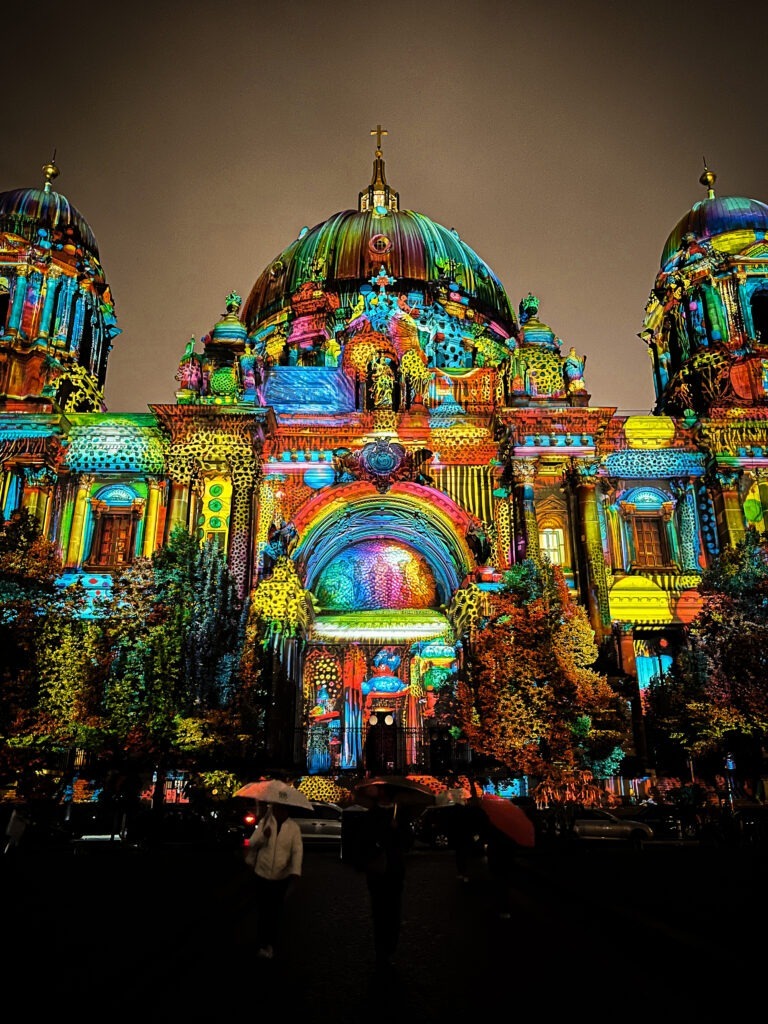
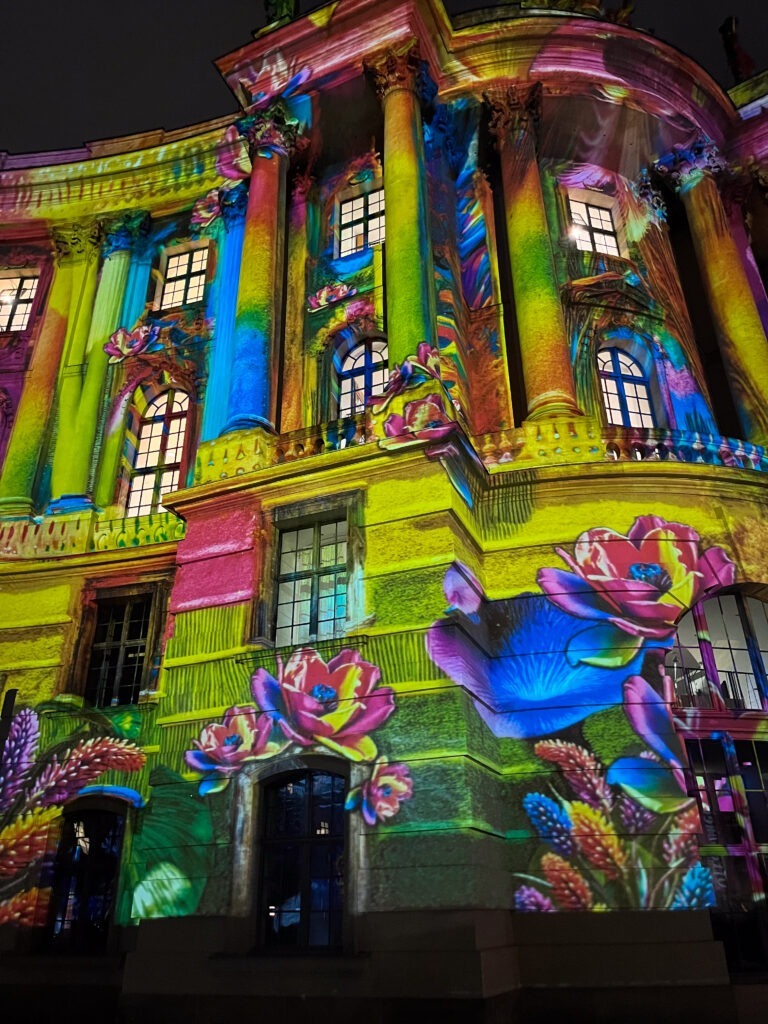
One of the best times to be in Berlin is during the annual Festival of Lights! The city transforms many of the iconic locations along Unter den Linden, such as the Brandenburg Gate, Bebel Platz and the Berlin Cathedral, into incredible illuminated works of art. This event is early to mid-October annually.
Bebelplatz is one of many Christmas markets you’ll find around Berlin.
And, every weekend in Berlin you will find a free art, antique and book flea market that starts at the German Historical Museum and continues to the Bode Museum on Museum Island.
Museums on Unter den Linden
- Pilecki-Institut (Pariser Platz on Unter den Linden)
- Erlebnis Europa (Unter den Linden, 78)
- Madame Tussauds Wax Museum (Unter den Linden, 74)
- Cold War Museum (Unter den Linden, 14)
- Bud Spencer Museum (Unter den Linden, 10)
- Zeughaus (Unter den Linden, 2)
If you are looking to experience all of the top attractions it might benefit you to buy Berlin’s Welcome Card giving you a pass to all of the top sites, or check out the free museums you can visit.
Restaurants on Unter den Linden
- Brasserie Quarré (Unter den Linden, 77) in Hotel Adlon
- Einstein (Unter den Linden, 42), makes my list of the best German restaurants and has one of the best-tasting schnitzels in the city
- Nante-Eck (Unter den Linden, 35)
Final Thoughts
No matter how long you are in Berlin, I recommend Unter den Linden be part of your itinerary. To that end, I invite you to read a few of the itinerary guides I have to help travellers visiting Berlin for the first time:
- what to do in Berlin for 1 day
- what to do in Berlin for 2 days
- what to do in Berlin for 3 days
If you found this article helpful, please consider sharing it!

